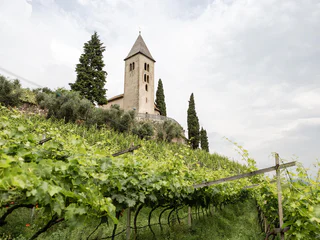
1/4
St. Jakob Church in Kastelaz
Tramin an der Weinstraße/Termeno sulla Strada del Vino, Alto Adige Wine Road

1/4
Tramin an der Weinstraße/Termeno sulla Strada del Vino, Alto Adige Wine Road

1/4
Castelbello/Kastelbell, Kastelbell-Tschars/Castelbello-Ciardes, Vinschgau/Val Venosta

Lasa/Laas, Laas/Lasa, Vinschgau/Val Venosta

1/3
Tarres/Tarsch, Latsch/Laces, Vinschgau/Val Venosta

1/3
Glorenza/Glurns, Glurns/Glorenza, Vinschgau/Val Venosta

Laghetti/Laag, Neumarkt/Egna, Alto Adige Wine Road

1/5
Prato alla Drava/Winnebach, Innichen/San Candido, Dolomites Region 3 Zinnen

1/5
Tubre/Taufers i. M., Taufers im Münstertal/Tubre, Vinschgau/Val Venosta

1/3
Morter/Morter, Latsch/Laces, Vinschgau/Val Venosta

1/4
Tarces/Tartsch, Mals/Malles, Vinschgau/Val Venosta

1/5
Naturno/Naturns, Naturns/Naturno, Meran/Merano and environs

1/5
Tubre/Taufers i. M., Taufers im Münstertal/Tubre, Vinschgau/Val Venosta

1/4
Varna/Vahrn, Vahrn/Varna, Brixen/Bressanone and environs

1/8
Lasa/Laas, Laas/Lasa, Vinschgau/Val Venosta

1/4
Malles/Mals, Mals/Malles, Vinschgau/Val Venosta

1/2
Lasa/Laas, Laas/Lasa, Vinschgau/Val Venosta

1/10
Pavicolo/Pawigl, Lana, Meran/Merano and environs

Corzes/Kortsch, Schlanders/Silandro, Vinschgau/Val Venosta

1/5
Santa Caterina/St. Kathrein, Hafling/Avelengo, Meran/Merano and environs

1/3
Laces/Latsch, Latsch/Laces, Vinschgau/Val Venosta

1/11
Glorenza/Glurns, Glurns/Glorenza, Vinschgau/Val Venosta

Lasa/Laas, Laas/Lasa, Vinschgau/Val Venosta

1/4
Laces/Latsch, Latsch/Laces, Vinschgau/Val Venosta

1/3
Morter/Morter, Latsch/Laces, Vinschgau/Val Venosta

1/3
Plars di Mezzo/Mitterplars, Tirol/Tirolo, Meran/Merano and environs

1/2
Predonico/Perdonig, Eppan an der Weinstaße/Appiano sulla Strada del Vino, Alto Adige Wine Road

1/4
Tirolo/Tirol, Tirol/Tirolo, Meran/Merano and environs

1/6
Grissiano/Grissian, Tisens/Tesimo, Meran/Merano and environs

Taufers i. M./Tubre, Taufers im Münstertal/Tubre, Vinschgau/Val Venosta

1/5
Burgusio/Burgeis, Mals/Malles, Vinschgau/Val Venosta